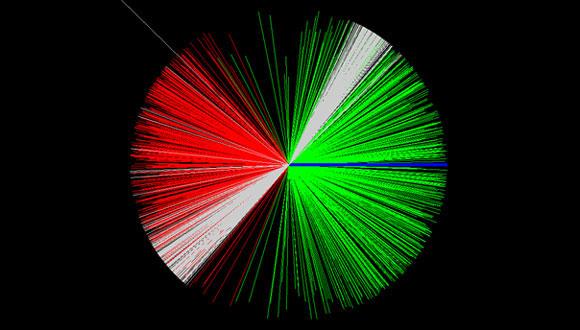Joint Seminar in Nuclear Physics
PROGRAM
14:30 - 14:45 Refreshments
14:45 - 15:45 "Beyond-mean-field boson-fermion description of atomic nuclei", Kosuke Nomura, University of Zagreb
Abstract:
Atomic nucleus is a unique system where the interplay between collective and single-particle degrees of freedom plays an important role, especially in those nuclei where proton and/or neutron numbers are odd. Nowadays a wealth of new data on the odd-nucleon systems has become available. However, theoretical description of these systems, particularly heavy nuclei, is a major computational challenge. We have developed a novel theoretical method for< calculating spectroscopic properties of medium-mass and heavy nuclei with odd nucleon number, within the framework of nuclear mean-field method and the algebraic model of interacting boson-fermion system. The method has overcome the computational difficulty in studying odd-mass nuclei, allowing an accurate, systematic and efficient description of their spectroscopic properties with only a few free parameters. Interesting applications of the method include the quantum phase transitions of intrinsic nuclear shapes and the test of fundamental symmetries in octupole-deformed (pear-shaped) nuclei. These topics are beyond the limits of conventional theoretical approaches.
15:45 - 16:15 Coffee Break
16:15 - 17:15 "interaction processes in A=2, 3 nuclei in pionless EFT", Hila deLeon, HUJI
Abstract:
Low energy electroweak interactions in light nuclear systems take part in many scenarios such as magnetic moments and decay, Big Bang nucleosynthesis and evolution of the Sun. The fundamental theory of physics at low energies is Quantum Chromodynamics (QCD) but unfortunately, a direct calculation is not applicable due to the nonperturbative character of QCD at the nuclear regime. One way to overcome this problem while using physical data is using Effective Field Theory (EFT). The so-called pionless EFT ) is an alternative EFT approach to light nuclei that is particularly useful at the low energies that are of interest for astrophysical processes, i.e. . In this work I have focused in A<4 electromagnetic and weak reactions which their momentum scale is much small than the pion mass - and therefore can be described using.
The electromagnetic reactions of both A=2 and A=3 are well measured, therefore using for describing those reactions can use to study the consistency of in the transition from to and vice-versa. In addition, by implementing the theoretical calculation using two different methods and comparing both theoretical results to the experimental data, we could determine the uncertainties from both theoretical and experimental sources. Unlike the electromagnetic reaction, the proton-proton () fusion is a weak reaction which cannot be measured due to its long lifetime. This reaction is the first of exothermic set of reactions, known as the chain, which is the source of the energy generated in the sun. The pp fusion is the slowest reaction in the whole chain years) and therefore it determines the Sun's lifetime. By describing the 3H decay (which is a well measured low-energy weak reaction) using and comparing the theoretical calculation with the experimental data, we could calculate the fusion and estimate the experimental and theoretical uncertainties.


